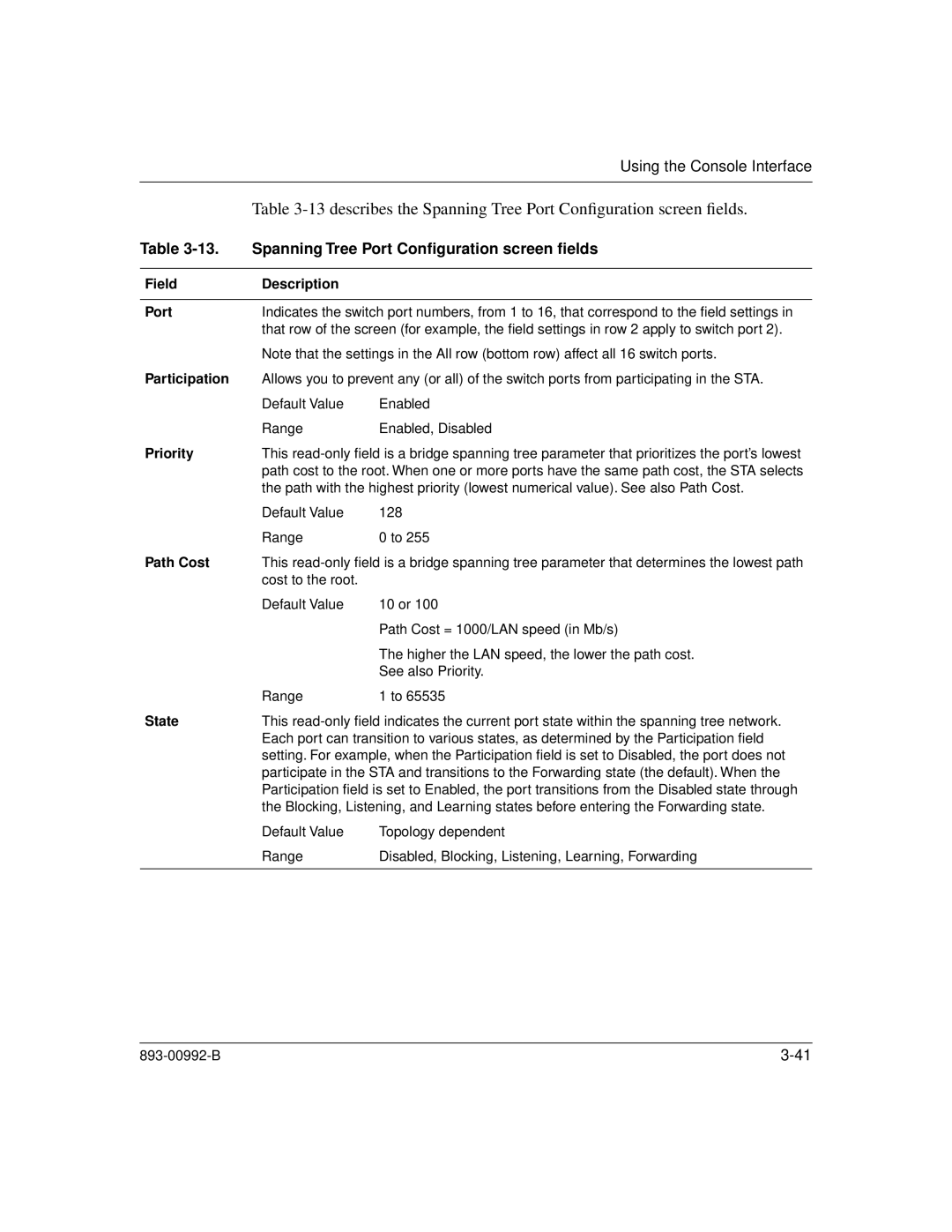|
| Using the Console Interface |
|
| |
| Table | |
Table | Spanning Tree Port Configuration screen fields | |
|
|
|
Field | Description |
|
|
| |
Port | Indicates the switch port numbers, from 1 to 16, that correspond to the field settings in | |
| that row of the screen (for example, the field settings in row 2 apply to switch port 2). | |
| Note that the settings in the All row (bottom row) affect all 16 switch ports. | |
Participation | Allows you to prevent any (or all) of the switch ports from participating in the STA. | |
| Default Value | Enabled |
| Range | Enabled, Disabled |
Priority | This | |
| path cost to the root. When one or more ports have the same path cost, the STA selects | |
| the path with the highest priority (lowest numerical value). See also Path Cost. | |
| Default Value | 128 |
| Range | 0 to 255 |
Path Cost | This | |
| cost to the root. |
|
| Default Value | 10 or 100 |
|
| Path Cost = 1000/LAN speed (in Mb/s) |
|
| The higher the LAN speed, the lower the path cost. |
|
| See also Priority. |
| Range | 1 to 65535 |
State | This | |
| Each port can transition to various states, as determined by the Participation field | |
| setting. For example, when the Participation field is set to Disabled, the port does not | |
| participate in the STA and transitions to the Forwarding state (the default). When the | |
| Participation field is set to Enabled, the port transitions from the Disabled state through | |
| the Blocking, Listening, and Learning states before entering the Forwarding state. | |
| Default Value | Topology dependent |
| Range | Disabled, Blocking, Listening, Learning, Forwarding |
|
|
|
